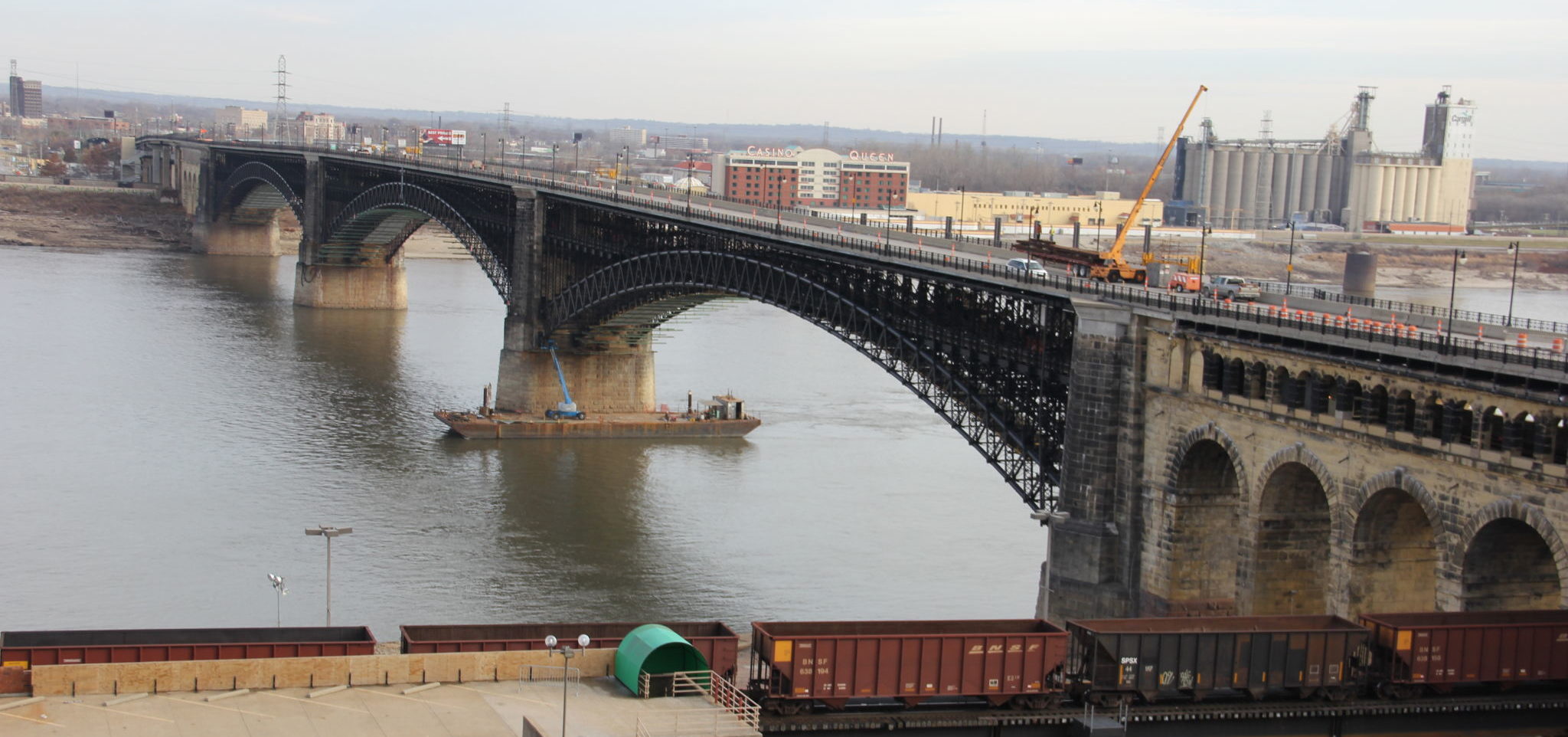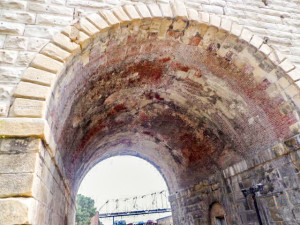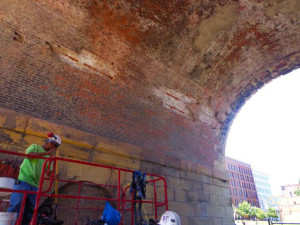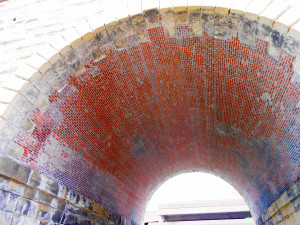
The iconic Eads Bridge crossing the Mississippi River between St. Louis, Missouri and East St. Louis, Illinois was the first steel structure bridge of its kind in the United States when it was designed by James B. Eads and opened on July 4, 1874. A significant engineering feat for its time, the historic bridge was in desperate need of rehabilitation from decades of use, repairs, and environmental exposure.

In May 2012, the Bi-State Development Agency/Metro (BSDA/Metro) launched a monumental Eads Bridge Rehabilitation project, largely funded through $34 million in federal support, which includes $25 million from American Recovery and Reinvestment Act (ARRA) funds. All phases of the project are scheduled to be completed next year, and are expected to extend the life of the bridge by 50 years. The top deck of the bridge, which supports vehicle and pedestrian travel, is owned by the City of St. Louis. BSDA/Metro owns the superstructure and the lower deck, which is the rail deck that supports the region’s MetroLink light rail system.
The multi-faceted restoration project includes:
- replacement of support steel dating from the 1880s;
- refinishing and repainting the bridge’s superstructure using a rust-inhibiting coating;
- upgrading the MetroLink light rail system; and
- restoring the brick archways under the bridge supporting its foundation.

St. Louis Bridge Company hired Western Specialty Contractors (a century-old firm formerly named Western Waterproofing Company) as a subcontractor on the project due to its past expertise in bridge work. Western’s scope of work focused on restoring the bridge’s brick archway supports on the Missouri side, which are located about 91 m (100 yards) from the waterfront and allow roadway traffic under the bridge. It needed to demolish all concrete patching on the brick archways, while also removing/replacing damaged bricks, and tuck-pointing all deteriorated mortar joints.
“We were contracted to remove and replace 1256 square feet [i.e. 117 m2] of bricks and tuck-point 1256 square feet of mortar joints. We ended up removing 1824 square feet [i.e. 169.5 m2] of bricks and tuck-pointing 469 square feet [i.e. 43.5 m2] of bricks,” said Western’s department manager, Rick Kerperien.
One of the challenges crews faced on the project included installing bricks in the overhead arches, which reached 9 m (30 ft) high at their centers.

“We overcame that obstacle by cutting wood strips and anchoring them to the arch ceilings, which would hold the new bricks securely in place while being installed,” Kerperien explained. “Once the bricks cured, we would remove the wood strips and fill in the holes where necessary.”
Western crews also had to bring in water for mixing the mortar and cleaning, and used generators for electricity on the project. The firm’s phase of the project was completed in four months.
The bridge will also be a focus in a seminar entitled, “James Buchanan Eads: Bridging the Father of the Waters” by George A. Everding, CSI, CCS, CCCA, AIA, LEED AP, at CONSTRUCT & the 59th Annual CSI Convention, which will be held in St. Louis in September.




